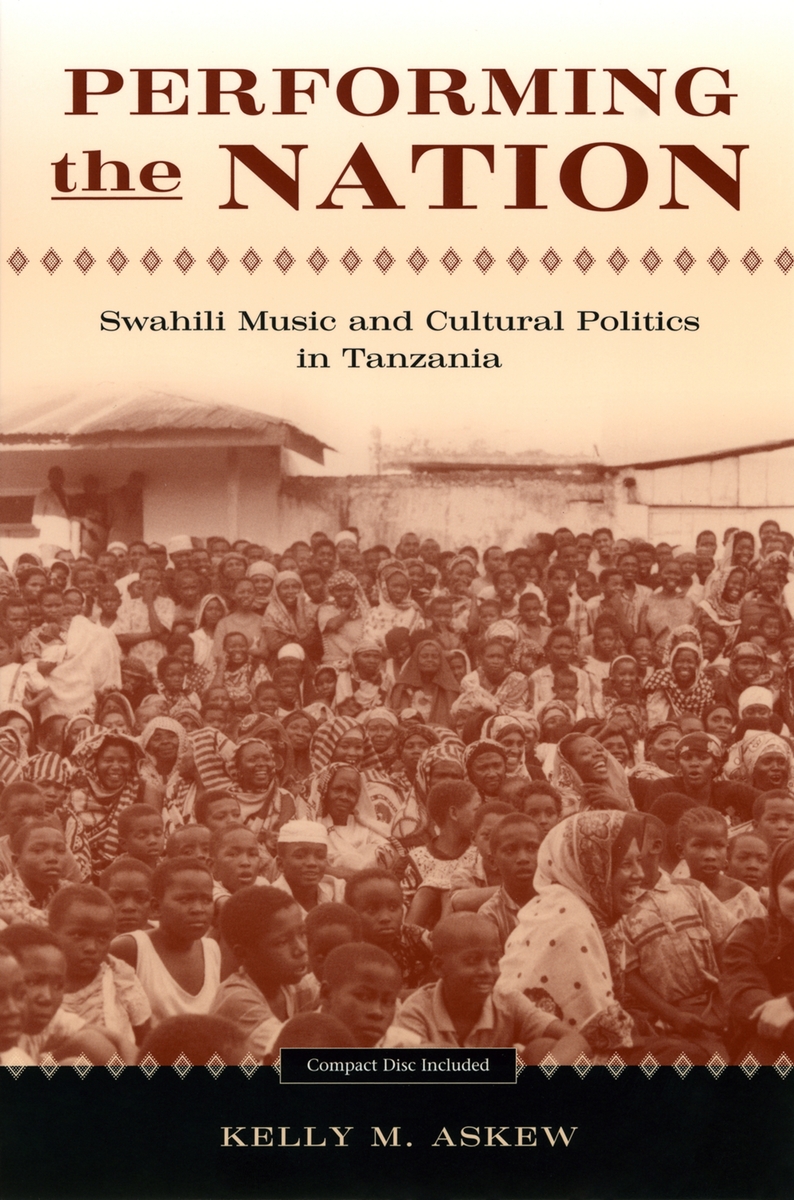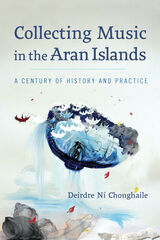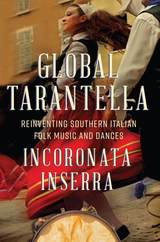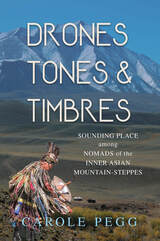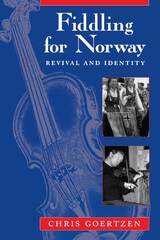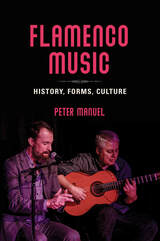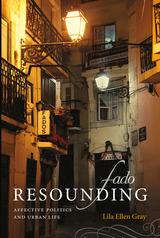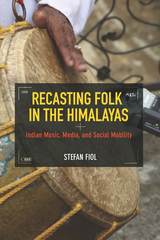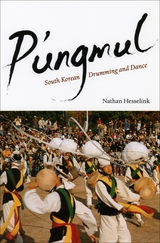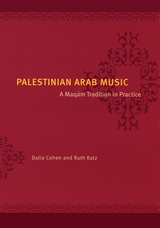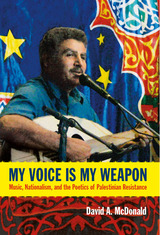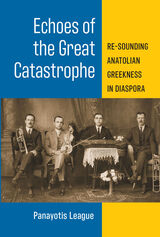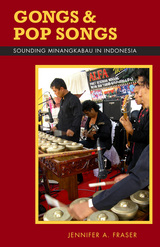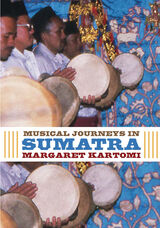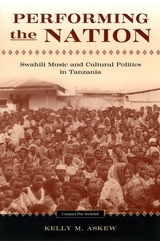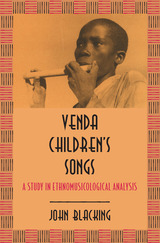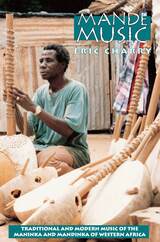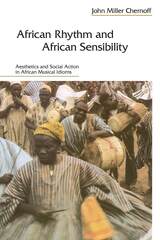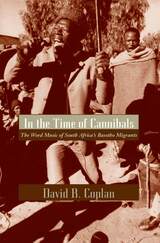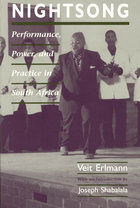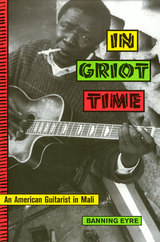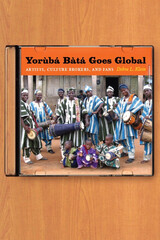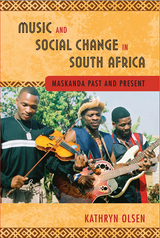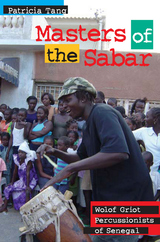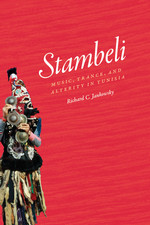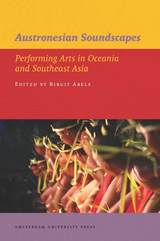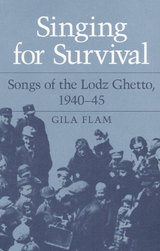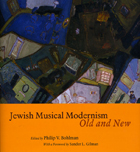Paper: 978-0-226-02981-8 | Cloth: 978-0-226-02980-1
Library of Congress Classification ML3760.A84 2002
Dewey Decimal Classification 306.484
As Askew shows, the genres of ngoma (traditional dance), dansi (urban jazz), and taarab (sung Swahili poetry) have played prominent parts in official articulations of "Tanzanian National Culture" over the years. Drawing on over a decade of research, including extensive experience as a taarab and dansi performer, Askew explores the intimate relations among musical practice, political ideology, and economic change. She reveals the processes and agents involved in the creation of Tanzania's national culture, from government elites to local musicians, poets, wedding participants, and traffic police. Throughout, Askew focuses on performance itself—musical and otherwise—as key to understanding both nation-building and interpersonal power dynamics.
“Askew has given us a richly detailed and engaging study of cultural politics in Tanzania during its transition from socialism to multipartyism. . . . A thought-provoking study of how culture in a postcolonial state is produced, contested, and appropriated. Askew is at her best when she analyzes the multilayered and often contradictory policies of a bureaucracy seeking simultaneously to promote both socialist values and African cultural authenticity.”
List of Tables
Acknowledgments
List of Common Abbreviations
1. Arts of Governance
2. Tanga, Tanganyika, Tanzania
3. Of Ginger Ale and Orange Soda
4. Weighty Measures, Significant Glances: Taarab Performance and the Constitution of Social Relations
5. Cultural Revolution in Tanzania?
6. Competing Agendas: The Production of Tanzanian National Culture
7. Of Mwanyas and Multipartyism: Taarab Performance and the Tanzanian State
8. Conclusion: Cultural Policy by and for the People
Appendix A: Song Texts and Translations
Appendix B: Poem from Tanga Technical School
Appendix C: Notes on the Accompanying CD
Notes
Glossary of Swahili Terms
References
Discography
Song Index
General Index
1 - ARTS OF GOVERNANCE
Art is not a mirror held up to reality, but a hammer with which to shape it.
â€"Bertolt Brecht
Policing the State, Performing the Nation
As we pulled up to the border an audible sigh echoed throughout the minibus. A long, clearly overloaded, forty-seater passenger bus was parked in front of the customs of�ce with dozens of unloaded boxes stacked along its side. Customs of�cials were peering into the boxes and inspecting the interior of the bus. Clusters of weary passengers, including women in buibui (the full-length black veil worn by coastal Swahili women), men in ko�a (embroidered caps worn by Swahili men), Asians of various denominations signi�ed by the style and color of their gar-ments, along with unidenti�able others in Western-style clothing dotted the grounds surrounding the customs of�ce. It did not bode well for a quick pass through customs for us, so after the driver parked to wait our turn I disembarked with the other twenty passengers on the minibus. We headed toward the makeshift shacks on the Tanzanian side of the border where we could purchase soda and mishkaki (grilled meat), chips-mayai (potato omelettes), or pan-fried chicken while waiting our turn for inspection. On a good day, one could pass through the border in less than an hour; but on a bad day such as today it could be a �ve-or six-hour ordeal.
We were en route to Mombasa, Kenya, from the city of Tanga, Tanzania, that was home to many of us on the bus. Mombasa and Tanga are two cities along the Swahili Coast of East Africa, a regional zone characterized by multiple forms of interstitiality: geographic, bridging land (the African continent) and sea (the Indian Ocean); economic, bridging maritime and agricultural activities; religious, bridging Islam, Christianity, and animism; cultural, bridging Africa, the Arabian Peninsula, and the Indian subcontinent; and national, bridging Kenya and Tanzania primarily, but also Somalia, Mozambique, and the Comoros Islands. National borders are key sites for the production, maintenance, delimitation, and reassertion of state authority. Our experience at the borderâ€"a common one the world overâ€"temporarily transformed those of us who rode together on that bus. Variously on our way to visit family, pursue business opportunities, or (as in my case) attend a wedding, and coincidentally sharing a common bus to get there, we were suddenly witnesses to and participants in a performance of state power. As we watched and waited, waited and watched, Tanzanian immigration and customs agents asserted state authority to invade (the bus), interrogate (its driver and conductor), and inspect (its cargo and passengers)â€"an authority made tangible, a dominant ideology materialized through its performance.
***
On another road on another day in Tanzania, nightfall brought with it the 10:00 P.M. curfew that suspended all bus trafï¬?c in the country until the following morning. Buses en route to their destinations pulled off the road, and passengers bundled down as best they could in hard, unpadded iron seats to wait out the long night. In Muheza, the last stop before Tanga along the Dar es Salaamâ€"Tanga road, travelers hoping to make it to Tanga before day’s end gathered disconsolately at the silent bus stand. No amount of persuasion could convince a bus driver to risk the high ï¬?nes that accompanied violation of the curfew. In desperation, someone turned to a lorry driver preparing to depart for Tanga. (Lorries, you see, were not subject to the curfew). The lorry, a tipper (dump truck), had ferried a load of construction gravel to a building site in Muheza earlier that day and was heading back to Tanga. The driver took pity and instructed his turnboy (helper) to let them board, charging each passenger a small fee. Old, young, male, femaleâ€"people piled into the back of the tipper, as many as it would hold, too grateful for the lift to be bothered by the lack of seats. The tipper set off, descending Muheza’s hills in the darkness. As the truck ambled along, murmurs of quiet conversation emanated from the truck bed as passengers grew acquainted with each other and discovered shared social ties. A few miles short of Tanga, however, to the driver’s great dismay, a police roadblock arose in the distance monitored by several easily identiï¬?ed trafï¬?c police in their all-white uniforms. It spelled trouble for the tipper and its illegal cargo. The turnboy began banging on the back wall of the front cab to alert passengers of trouble ahead while the driver called out to them from his window. One passenger returned a reassuring response, telling the driver that his aid would not be rewarded with punishment. In the back, momentary panic was replaced with calm determination. One passenger was selected to lie down in the middle of the truck bed, and cloths borrowed off two female passengers were used to cover him from head to foot. Almost in unison, the crowd of passengersâ€"who had not known each other prior to this journeyâ€"began wailing and crying, loudly bemoaning the loss of a loved one. As the truck neared the roadblock, an ofï¬?cer signaled it to stop. His companion peered into the back and mistaking (as intended) the covered passenger for a corpse and the surrounding strangers for its grieving kin, waved the funeral truck along. No ï¬?ne was incurred, the tipper reached its destination in safety, and the passengersâ€"through a spontaneous act of performanceâ€"outwitted an extractive and punitive state apparatus.
***
It was still a good two hours before the president’s plane was scheduled to land, but already the rarely used Tanga Airport was teeming with people. District and regional cultural ofï¬?cers from the Ministry of Education and Culture scurried about from one performing group to the next, looking very busy and authoritative in their determinations over which group should be situated where. At the far end of the tarmac, Saruji Cultural Troupe dancers (sponsored by the local Tanga Cement Co., a government parastatal) rehearsed their numbers while the musicians warmed up their drums. To the right stood the Gita Musical Club, a mixed male/female dance society with Digo ethnic origins and a signature steel pan drum. They had given up attempting to rehearse over the heavy drums and insistent rattles of the Saruji troupe and instead stood by waiting patiently. To the right of Gita was placed Saruji’s rival Kikundi cha Utamaduni Bandari Tanga (KIUBATA), the cultural troupe sponsored by the Tanga Harbours Authority. Completing the presentation of local cultural ambassadors stood a line of uniformed women (in matching kangaâ€"printed cloths with Swahili sayings) and a line of uniformed men (in white, full-length, Islamic gowns called kanzu). They represented TAMTA (Tanganyika Muslim Teachers’ Association), a prominent local mosque and religious academy, and had come to perform kasida, songs in praise of the Prophet Mohammed accompanied by drums and tambourines. Beside the TAMTA delegation stood a long row of Tanga’s elite businessmen and politicians, who all wished to greet the president personally upon his arrival. Off to one side, members of the ruling party’s CCM (Chama cha Mapinduzi, Party of the Revolution) Youth League stood at attention after having practiced a number of drills and formations. They were going to present the president with a new bandana with which to remember his visit to Tanga.
Close to the scheduled time, the presidential plane appeared on the horizon and soon thereafter set down on the tarmac. On cue from the district cultural ofï¬?cer, all four performance groups started performing at once. Musical confusion bordering on cacophony reigned, yet the goal of manufacturing a festive atmosphere was achieved. President Ali Hassan Mwinyi, second president of the United Republic of Tanzania, descended the stairs of his plane smiling broadly (ï¬?gure 1.1). The Youth League approached in formation, and the president graciously received his gift, allowing one very young cadre to tie it around his neck. He ceremoniously walked down the line of performers, pausing momentarily and smiling his approval at each group, and then went to greet Tanga’s privileged, bestowing his handshake on a lucky few. From there he was escorted to a waiting Landcruiser and whisked away to the Ikulu, the local State House. The entire welcome from plane landing to car takeoff had lasted less than thirty minutes. Yet in those thirty minutes (and hours of preparation beforehand), the president, through his flaw-less presidential performance, reinforced his political and social superiority, the cultural ofï¬?cers through their orders and general busy-ness had performed their authority over the musicians, Tanga’s elite had performed their self-importance for each other, andâ€"for those who wished to view it as suchâ€"the youths and musicians had performed their loyalty to the state.
***
“A construct such as the state,â€? writes Timothy Mitchell, “occurs not merely as a subjective belief, but as a representation reproduced in visible everyday forms, such as the language of legal practice, the architecture of public buildings, the wearing of military uniforms, or the marking and policing of frontiers. The ideological forms of the state are an empirical phenomenon, as solid and discernible as a legal structure or a party systemâ€? (Mitchell 1999, 81). With the possible exception of public architecture, these “state effectsâ€? (Mitchell’s phrase) all require performance, or rather “performative nonperformanceâ€? as Michael Herzfeld prefers to describe it (Herzfeld 1997, 31). While heartily agreeing with Mitchell on the palpability of performative processes, performance theorists will nonetheless tell you that a performance is anything but consistently “solid.â€? As Edward Schieffelin notes, “genres of performance are . . . both fundamentally interactive and inherently risky. There is always something aesthetically and/or practically at stake in them, and something can always go wrongâ€? (Schieffelin 1996, 60; emphasis in original). Indeed, the very tenuousness of performanceâ€"its susceptibility to modiï¬?cation, unrehearsed action, unanticipated response, and the contingencies of everyday lifeâ€"renders it a powerful social force.
In this book, I follow Schieffelin’s lead in showing “how a performative analysis can contribute to understanding the emergence of consequential realities in the historical worldâ€? (1996, 84). The reality under question here is the emergence of the Tanzanian state. Composed of two formerly independent entities, Tanganyika and Zanzibar, the United Republic of Tanzania is a state wracked by contradiction, fraught with multiple cleavages, and characterized by a condition of what can only be termed “consistent inconsistency.â€? In these respects, it is no different than any other state, for one trait deemed common, indeed fundamental, to states the world over is that they are “palimpsests of contradictionâ€? (Lonsdale and Berman 1979, 491; also Herzfeld 1997, 2). Explains John Lonsdale, “States are a fabric of ordered tension between ‘a variety of competing forms of authority,’ each with different myths of legitimacy and principles of allegiance. Successive pragmatic rules of power which become norms, new layers of institutions to cope with new problems, get written into the historical structure, partially rubbed out and written over again, so that . . . nothing quite ‘ï¬?ts’â€? (Lonsdale 1981, 154). An increasingly dominant concern for state strategists then becomes how to smooth over the inconsistencies and present a uniï¬?ed national front that blankets dissension and masks diversity. Performanceâ€"in its many guises at customs outposts, high courts, state holiday celebrations, and government motorcadesâ€"offers a startlingly common recourse. Yet performance does not remain the exclusive tool of power-holders. As the vignette of the ad hoc funeral truck revealed, performance as readily constitutes a means of countering and destabilizing established power structures.
The relatively young state of Tanzania aptly exempliï¬?es Lonsdale’s assessment. The union of the Republic of Tanganyika (independent in 1961) and the People’s Republic of Zanzibar (independent in 1963) created the “two countries in one nationâ€? (nchi mbili taifa moja) that constitute today’s Tanzania (see map 1.1). It was surreptitiously signed into existence on April 26, 1964, by Julius Nyerere (ï¬?rst president of Tanganyika and subsequently Tanzania) and Abeid Karume (who assumed control over Zanzibar following the violent January 1964 revolution). Without forewarning and without their consent, Tanganyikans and Zanzibaris were summarily proclaimed national brethren, common citizens of the new state. The challenges, however, to this political marriage have been marked and many. As this book goes to press, the Unionâ€" fraught by competing agendas, visions, and visionariesâ€"is very much under attack, and its continued existence open to question.
For three decades Tanzania’s bifurcated identities of Tanzania Bara/ Tanzania Visiwani (mainland Tanzania versus island Tanzania) and Tanganyika/Zanzibar lay as discom�ted but tolerant bedfellows under Nyerere’s disciplining socialism. A two-government system prevailed: the Union (Muungano) government and the Zanzibar government (each with its own Parliament). An ongoing debate exists over whether or not a third government (for Tanganyika) is required. The Zanzibar government controls its internal affairs, including agriculture, health, primary and secondary education, technical training, court system, communication, and (of particular signi�cance for this analysis) cultural policy. The Union government, situated on the mainland, concerns itself with all the same affairs with respect to the mainland plus Union issues such as defense, citizenship, treasury, foreign affairs, higher education, immigration, police, air travel/traf�c, and the High Court. Each “country� thus maintains its own government bureaucracy and internal judicial system but pays homage to an overarching entity that is rife with contradiction and conflict. The legality of the Union has been called into question and seriously contested by the argument that the Union Constitution was never rati�ed nor fully modi�ed. Tensions have mounted with a series of events that placed Zanzibar in an independent position vis-a`-vis Tanzania, such as the 1993 decision by the Zanzibar government to join the Organization of Islamic Conferences (OIC) without knowledge or approval from the Union government and in outright violation of the Constitution. (Under intense pressure, it was forced soon afterwards to withdraw.) In February 1995 (the year of Tanzania’s �rst multiparty elections), the World Bank recognized Zanzibar as an individual country against the wishes of the Union government, which claimed (and still claims) the exclusive right to represent Zanzibar internationally. The World Bank additionally recommended that donors negotiate with Zanzibar directly and separately in issues pertaining to grants and loans. Soon thereafter, Zanzibari of�cials announced their intent to refashion Zanzibar into a duty-free enclave in the style of Hong Kong. Finally, added to all this was the emergence of an opposition party called the Civic United Front, which has an island-heavy support base, endorses greater autonomy for Zanzibar, and argues against domination of the islands by the mainland. Small wonder that newspapers from that year on have overflowed with editorials questioning the status and viability of the Union and with charges lobbed both by islanders against the mainland and by mainlanders against the isles that each side bene�ts to the other’s detriment.
Thus in the wake of the transition from socialism to multiparty democracy (a process initiated in the 1980s), opportunities for questioning the received of�cial representation of Tanzania as a united “nation� (in the sense forwarded by Verdery 1993 of a symbolic and ideological construct referencing the relation between a state and its subjects, and between a state and the international order of nation-states) have increased signi�cantly. Subject always to debate (however much government of�cials pretend otherwise) from the date of its conception to the present, Tanzanian national identity is undergoing the latest in a series of dramatic transformations. This book constitutes an attempt to map out these identities, analyze them for their novel and recycled elements, situate them in their broader political and economic context, and, most important, underscore how performance has been fundamental to both the active and reactive processes of transformation. Foucault’s dictum that power is rendered ef�cacious only in the process of enactment supports the performative understanding of power that I seek to forward here (Foucault 1980, 89). “Power must be seen to be appreciated,� goes the saying. Machiavelli understood this and secured his place in history by advising princes on precisely this fact. Emperors from Julius Caesar to Haile Selassie also understood this, as any decent biography discloses. Presidential handlers, image consultants, and royal advisors all understand this, thereby carefully choreographing their rulers’ every interaction with citizenry. Power thus not only requires performance, but indeed is itself more often than not an act of performance.
Theories of Nationalism Reconsidered
Tanzania flies in the face of long-standing misconceptions of what constitutes a nation. Reigning paradigms contemplating the nature of the modern nation-state tend to assume congruence between the political and national and often the cultural unit (e.g., Gellner 1983), but such models do not apply to most modern states, much less postcolonies like Tanzania and Kenya, where boundaries were arbitrarily set without regard to the communities they sundered and within which a multitude of ethnic groups continue to maintain their respective social identities. Political/national congruence and cultural homogeneityâ€"rare in our world to the point of being theoretically invalidâ€"are formally undermined in Tanzania by the existence of two previously independent national units and the subsequent subdivision of each of these into multiple ethnic, “racial,â€? religious, and socioeconomic constituencies. In the face of such diversityâ€"including more than 120 ethnic groupsâ€" the notion of homogeneity is impossible to entertain.
And yet entertained it was in early policy documents and of�cial speeches. Tanzania’s politicians carved out an ideological and rhetorical space within which to construct �rst Tanganyikan and Zanzibari and then Tanzanian identities that would “cut across the barriers of tribe, race, and religion� (Taylor 1963, 172). In this respect, they conceived of “the nation� in terms set by Western nationalists and theorists that only recently have come under attack.
Theories of nationalism have progressed signiï¬?cantly since Ernest Gellner released his oft-cited Nations and Nationalism, which equated nationalism with the social conditions of industrial, late-capitalist Europe. While his model obviates the possibilities of cultural pluralism, of alternative economic progressions, and of non-Western circumstances for the establishment of nation-states, he nevertheless recognizes something he terms “willâ€? as the social glue holding members of nations together (Gellner 1983, 54â€"55). It is this concept that Benedict Anderson elaborates, namely, the ability to think beyond one’s immediate community to an “imagined communityâ€? that encompasses people whom one will never know personally. Although, like Gellner, Anderson presents a universalist interpretation that attempts to describe nationalism as a fundamentally singular (if not wholly European) phenomenon, he shifted attention away from national constructs to the processes of construction and highlighted “print-capitalismâ€? as the primary medium of developing national consciousness (Anderson 1989, 46).
Anderson argues that nationalism is, in the end, a cultural artifact, yet he does not fully explore the ramiï¬?cations of thisâ€"that nationalism would then be expected to take very different forms in accordance with cultural variation. Bruce Kapferer (1988) succeeded in establishing na-tionalism’s cultural speciï¬?city through his comparison of the egalitarian ideology of Australian nationalism with the hierarchical ideology of Sri Lankan nationalism. Similar in its attention to cultural variants but this time within a single state is the perspective on Greek nationalism offered by Herzfeld (1982, 1987, 1991, 1997). In Greece, two contrasting ideologies compete for symbolic dominance. Ellinismos, an ideology associated with the Classical past and bearing masculine connotations, is pitted against Romiossini, a more intimated, decidedly feminine ideology. This theme is echoed by Fox (1990a), who theorizes that national culture necessarily emerges from competing ideologies, an argument reinforced by research on Romania by Verdery (1990, 1991a) on Guyana by Williams (1990, 1991), on Quebec by Handler (1988), on England by Corrigan and Sayer (1985), and on India by Appadurai (1988) and Chatterjee (1986, 1993). Each of these case studies underscores the internally contested nature of nationalism: that within any single nation (Western and non-Western both), different ideologies compete for recognition and status as the dominant national ideology. Thus nationalism has evolved as a concept from being (a) a uniform Western construct, to (b) one that varies with cultural context, to (c) one that is strongly contested and highly negotiated with differing internal variants.
The negotiated nature of Tanzanian nationalism comes to the fore in an examination of its cultural policies and practices, speci�cally those relating to musical performance. An examination of policy documents reveals how policy shifted in accordance with the larger political/ economic/ideological transitions from pre-independence nationalism to post-independence nationalism to socialism and, most recently, liberalization. An investigation into the practices accompanying policy exposes the negotiation that occurred, and continues to occur, between the state and its citizenry. Three signi�cant studies of music and politics in Tanzania precede and have informed my analysis: Susan Gei-ger’s, Terence Ranger’s, and Elias Songoyi’s respective analyses of how ngoma (dance) societies served as potent vehicles for inculcating and mobilizing political consciousness during the late colonial and early post-independence periods. The data they offer and the data I present here mark a radical departure from the exclusive emphasis on print media that pervades the dominant literature. Print media simply cannot prove as essential in situations where literacy is not widespread. The literate bias subsumed within the Eurocentric bias of Anderson and Gellner interestingly has not evoked criticism. I propose that attention to musical elaborations of nationalism can counteract this theoretical deafness.
“To understand the symbolic dimension of the effect of the state, and in particular what we may call the effect of universality [emphasis in original], it is necessary to understand the speciï¬?c functioning of the bureaucratic microcosm and thus to analyze the genesis and structure of this universe of agents of the state who have constituted themselves into a state nobility by instituting the state, and in particular, by producing the performative discourse on the state which, under the guise of saying what the state is, caused the state to come into being by stating what it should be [emphasis mine]â€? (Bourdieu 1999, 71; see also Verdery 1991a, 3). This book is at heart an ethnography of Tanzanian nationalism, an examinationâ€" following Bourdieu’s adviceâ€"of the agents and perceived enemies of the state, and of the battle they have waged over the construction of Tanzanian national identity. The war, however, is not one of words alone. Government documents employing words to bring a speciï¬?c vision of Tanzania into being were often supplemented with government action, yet never was there a guarantee of success. In this case (and, I suspect, many others), “saying what the state isâ€? did not always “cause the state to come into being.â€? Indeed, as chapter 5 reveals, a high degree of failure was more often the norm. So here I would quarrel with Bourdieu for attributing as much unqualiï¬?ed success as he does to state constructions: “[T]he effects of choices made by the state have so completely impressed themselves in reality and in minds that possibilities initially discarded have become totally unthinkableâ€? (Bourdieu 1999, 54). No, the situation in Tanzania resembles more that of Romania as described by Verdery, where “no one effectively controlled what was said: as people’s words entered into a discursive ï¬?eld, they were instantly available for reinterpretation, to be seized and turned against their speakersâ€? (1991a, 9). Aspiring hegemonies, be they imposed from the top or the bottom, are always subject to perforation. Latent possibilities and alternative visions can never be fully nor permanently eradicated, however imposing a state bureaucracy may appear (Gramsci 1971).
Yet some theorists persist in privileging the state and its constructions and in attributing to it a larger degree of success than is warranted. The “statist� or “state-centric� approach in political science presupposes the autonomy, coherence, agency, and effectiveness of the state. Evans, Rueschemeyer, and Skocpol’s Bringing the State Back In (1985) has spawned decades of scholarship that champions the state as an autonomous agent, undiluted by either class or culture. Viewed unproblematically as occupying an oppositional relationship to “society,� the state takes on human form as a rational individual, acting always in its best interests. All its many citizens are reduced to singular intent and purpose, and all cultural variation, competing visions, and socioeconomic differentiation are erased. Culture, when considered at all, �gures primarily “as an effect and not a determinant of the state� (Steinmetz 1999, 17).
So, if my �rst point of critique of reigning state paradigms is that they exaggerate the effectiveness of state constructions, my second point of critique targets the very static perception they have of state identities. In this theoretical day and age when the fluidity and performativity of social identities (Butler 1990; Kondo 1990) is generally accepted, it is surprising why more researchers studying nation-states have not applied these same understandings to them. No less than individual or group identities do national identities wax and wane and undergo signi�cant change. As the case in point, Tanzania, in its relatively short, thirty-seven-year life as a nation-state, has adopted and shed multiple political, social, and economic identities, which the following chapters explore in detail.
Finally, my third point of critique (applicable to both the state and nationalism literatures) relates to assumptions about where national identities originate. Early theorists of nationalism spoke at length about how nationalist constructs were created and imposed on ordinary citizens. Case studies drawn from Europe supported such paradigms, which located the power to imagine communities and invent traditions with elites, be they politicians or intellectuals (Hobsbawm and Ranger 1983; Herzfeld 1982; Handler 1988; Verdery 1991a). Producers of culture, so it would appear, must have access to resources that enable them to promote their particular vision of the nation. But the story I tell here is of how some of the least privileged citizens of one emergent African nation hijacked and reconï¬?gured the process of nationalism. This case forces a reconsideration of existing theories of nationalism. Just as Foucault advanced our understanding of power as a diffuse resource available to everyone everywhere (albeit to differing degrees) and never the exclusive domain of some over others, so too should we view nationalism as something engaged in by people at all levels of the social matrixâ€"even if their engagement takes the form of outright rejection or dismissive disregard. In discussing Anderson’s analysis of nationalism, Herzfeld raises a similar concern: “[Anderson] does not tell us why this works so well and so often, nor does he tell us whether the actions of the converted exert a reciprocal effect on the cultural form of the evolving nation-stateâ€? (Herzfeld 1997, 6). Rather than an abstract ideology produced by some to be consumed by others, nationalism ought to be conceptualized as a series of continually negotiated relationships between people who share occupancy in a deï¬?ned geographic, political, or ideological space. No amount of rhetoric can construct a nation if it fails to ï¬?nd resonance with the state citizenry. There must be some degree of mutual engagement for nationalism to flourish, but this very element of mutuality, of sharedness, of common participation, admits the possibility of dissension from those excluded from state activities. Citizens are not relegated to roles of passive observation and mute compliance. The mere fact that their endorsement (or at least the appearance of it) is key to any successful state enterprise forces every self-preservationist state bureaucracy to continually monitor the level of public support it commands.
The Production of Tanzanian National Culture
The waves of independence that swept across Africa beginning in the 1950s left in their wake a desire to recapture African culture and his-toryâ€"the culture and history that had been mutilated and reinvented by colonial interests. Fledgling states, however, found themselves faced with enormous diversity and few unifying elements save the experience of colonialism (and even that was experienced differentially among and within the colonies). African leaders and regimes developed different approaches to the problem of internal uniï¬?cation, but almost all placed rhetorical weight on the construction of national cultures. One common strategy was to establish Ministries of Culture that were assigned responsibility for recovering and recuperating the past. Tanzania’s leadership committed very early to this principle and embarked on a clearly articulated national project of social and cultural uniï¬?cation, one that explicitly cited cultural homogenization as a goal (Mbughuni 1974). In his Republic Day speech of December 10, 1962 (the year following Tanganyikan independence), Nyerere announced the establishment of the Ministry of National Culture and Youth saying,
The major change I have made is to set up an entirely new Ministry: the Ministry of National Culture and Youth. I have done this because I believe that its culture is the essence and spirit of any nation. A country which lacks its own culture is no more than a collection of people without the spirit which makes them a nation. Of all the crimes of colonialism there is none worse than the attempt to make us believe we had no indigenous culture of our own; or that what we did have was worthlessâ€"something of which we should be ashamed, instead of a source of pride.. . .
When we were at school we were taught to sing the songs of the European. How many of us were taught the songs of the Wanyamwezi or of the Wahehe? Many of us have learnt to dance the “rumba� or the “chachacha� to rock-and-roll and to “twist� and even to dance the “waltz� and the “foxtrot.� But how many of us can dance, have even heard of, the Gombe Sugu, the Mangala, the Konge, Nyang’umumi, Kiduo or Lele Mama? Most of us can play the guitar, the piano, or other European musical instruments. How many Africans in Tanganyika, particularly among the educated, can play the African drums? . . .
So I have set up this new Ministry to help us regain our pride in our own culture. I want it to seek out the best of the traditions and customs of all the tribes and make them part of our national culture (Ministry of National Culture and Youth n.d., 3).
Musical performance, as one easily identi�able and highly emotive element of cultural practice, thus constituted an integral component in Tanzania’s cultural policy from its inception. Culture brokers within the government bureaucracy targeted “traditional� musical genres for appropriation and absorption in “Tanzanian national culture� (Mbughuni 1974). Exactly what was envisioned as “Tanzanian national culture,� however, proved and continues to prove elusive. Despite the con�dence implied by continual references to “national culture� in policy statements outlining the means and strategies of its construction, conflicting and contradictory images reveal the fundamental ambiguity surrounding it. The process of selecting which musical traditions should represent the nation has been fraught with competing agendas. Ngoma, or “traditional dances,� are valued for essentializing both “tradition� and the ethnic groups that perform them. At the same time, however, they are subjected to modi�cation to accommodate nationalist goals and objectives.
Contradictions such as these at the level of cultural policy are reflective of larger problems concerning the “imagining� of the Tanzanian nation-state. Although the theoretical articulation of “imagined communities,� “invented traditions,� and “cultural constructions/produc-tions� would seem to imply the existence of coherent �nal products, we are now well aware of the transient and un-�nal nature of social creations. In Tanzania, cultural objectives were deconstructed and reconstructed according to who wielded political authority. Colonialism, nationalism, socialism, and liberalization are all constructs that have informed the processes of imagining Tanzania, each one signi�cantly altering the creations of the one that preceded it. And so we are left with two key questions: How does a nation come to be imagined? Who does the imagining?
Performance assumes center stage in this ethnography in two ways. First, it is employed as a vehicle for accessing the process of nation-building because it was consciously exploited by the Tanzanian state for that very purpose. As such, it perfectly supports my ulterior objective to highlight the imbrication of culture and politics and to level a strong rejoinder at those scholars who view popular culture generally and the arts in particular as tangential, discredited social domains of little or no relevance for the study of politics and government. Second, over the course of this book, I advance an understanding of power as embedded in performance. As Eric Wolf notes, “Ideas or systems of ideas do not, of course, float about in incorporeal space; they acquire substance through communication in discourse and performanceâ€? (1999, 6). “Per-formanceâ€?â€"whether or not Wolf realized itâ€"is a loaded term. With it comes a signiï¬?cant corpus of theory exposing performance as a mode of social interaction that is contingent, emergent, undetermined, and susceptible to unrehearsed actions (Barber 1987; Coplan 1994; Drewal 1991; Schechner 1985, 1988; Schechner and Appel 1990; Schieffelin 1996, 1998; Turner 1986). This school of thought can be brought to bear on the related concept of power in fruitful and enlightening ways. Although I elaborate this argument most fully in this book’s conclusion, the following story provides a microcosmic example of precisely this relationship.
Performing the Politics of the Personal
It was in 1987 during my ï¬?rst visit to the Swahili coast that I ï¬?rst came across the genre of sung poetry called taarab. New to my ears and with my fluency in Kiswahili yet in its nascent stage,18 I found it difï¬?cult to understand not only the lyrics but the actions that accompanied its performance. I had been invited to a wedding. I knew neither the bride nor the groom but, as I was to learn later, these tend to be very open occasions to which the publicâ€"or rather, the female publicâ€"is welcomed. The celebration occurred in a rented hall with an elaborately decorated stage that was empty but for a couch and two chairs. Below the stage in front of the almost exclusively female audience stood the band and its key performer, the famous Juma Bhalo, or “the man with the golden voice.â€? My close friend Zaina, who had brought me to the wedding, explained that he was the reigning king of taarabâ€"that one’s wedding wasn’t nearly as successful a wedding if he didn’t sing at itâ€"and added with a smile that he was quite popular among the women.
My senses were overwhelmed. The women were dressed in the ï¬?nest of materialsâ€"taffeta, satin, velvet, organza, and tulle in every imaginable color. The odors of perfume, rosewater (sprinkled on every guest by female attendants associated with the wedding party), udi (incense with which the women had infused their dresses), and perfumed hair ointments took my impoverished American olfactory senses by surprise. I had to adjust to the feel of sitting on woven mats and accommodating all the women in my immediate vicinity as we periodically changed position to avoid cramps. The sambusas (meat-ï¬?lled pastries) I found delicious, but not so the overly sweet strawberry-and orange-flavored sodas that accompanied them.
Then there was the music: my �rst experience of taarab. This �rst impression was not all that favorable. Like many Westerners, I found the nasal quality of voice initially unpleasant to listen to and the melodies more Indian or Middle Eastern than my preconceived ideas of “African music� had allowed possible. I strove to understand the lyrics but my Kiswahili simply was not good enough, and I did not yet understand that the Kiswahili utilized in taarab lyrics often draws upon archaic vocabulary and metaphoric references so as to disguise and hide meanings. I took mental notes on the number of musicians (around five or so) and the interesting mixture of Western, Indian, and Arabic instruments they played: electronic keyboard, nai (a side-blown Middle Eastern flute), tabla, bongos, and tambourine.
If you are a student who cannot use this book in printed form, BiblioVault may be able to supply you with an electronic file for alternative access.
Please have the accessibility coordinator at your school fill out this form.
It can take 2-3 weeks for requests to be filled.
See other books on: Cultural policy | Cultural Politics | Nation | Performing | Tanzania
See other titles from University of Chicago Press
